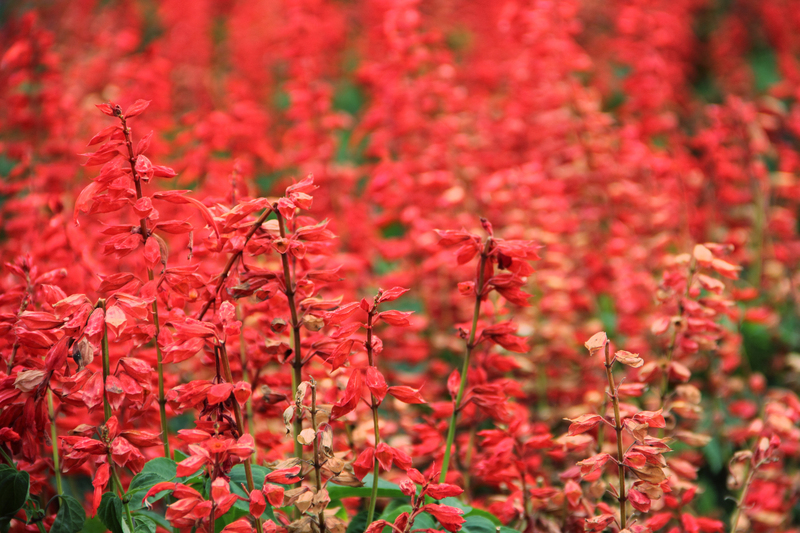From Novice to Orchid Whisperer: Your Care Guide
Posted on 29/06/2025
From Novice to Orchid Whisperer: Your Comprehensive Care Guide
Orchids--elegant, diverse, and captivating--have long enchanted plant lovers. But their reputation for being finicky can intimidate even the greenest thumbs. Worry not! Whether you're an absolute beginner or someone looking to deepen their relationship with these stunning flowers, this orchid care guide will reveal all you need to know to thrive as an Orchid Whisperer.
Understanding Orchids: What Makes Them Unique?
With over 25,000 species and more than 100,000 hybrids, orchids offer an astonishing variety of shapes, colors, and sizes. Unlike many other houseplants, their fascinating growth habits and specialized care needs mean that understanding the basics is crucial for success.
Orchid Growth Habits
- Epiphytic Orchids: Most popular houseplant varieties (like Phalaenopsis, Cattleya, and Dendrobium) grow attached to trees in the wild, taking moisture and nutrients from the air and rain.
- Terrestrial Orchids: Some species, such as Paphiopedilum, grow in soil on the forest floor.
Understanding these habits is key to providing the right care.

The Orchid Essentials: Foundational Care
1. Choosing Your First Orchid
Not all orchids are created equal. If you're just beginning, start with robust varieties known for their adaptability and lower maintenance:
- Phalaenopsis (Moth Orchid) - Most recommended for beginners, abundant blooms, forgiving nature.
- Dendrobium - Striking flowers and tough constitution.
- Paphiopedilum (Slipper Orchid) - Unique and slightly more tolerant of standard home conditions.
Purchase from reputable growers to ensure a healthy plant and avoid disappointment.
2. Lighting: Shedding Light on the Matter
Light is perhaps the most important factor for your orchid's success. These are the basics:
- Bright, Indirect Light: Most orchids--especially Phalaenopsis--thrive in filtered sunlight. An east-facing window is ideal.
- Signs of Light Stress:
- Too Little: Droopy leaves, lack of flowering.
- Too Much: Leathery, reddish, or scorched leaves.
- Tip: If you can read comfortably by the natural light surrounding your orchid, it's likely enough.
3. Watering: The Balancing Act
Overwatering is the most common cause of orchid demise. Here's what you need to know:
- Frequency: Once a week is standard for many Phalaenopsis orchids. Always check the medium first--it should be nearly dry before rewatering.
- Method: Use tepid water and water early in the day to avoid rot. Avoid letting water sit in the crown (the center of the plant).
- Quality: Use rainwater, distilled, or filtered tap water when possible. Hard water can damage roots over time.
Golden Rule: When in doubt, let it dry out a bit longer!
4. The Best Potting Mediums and Containers
- Special Orchid Mix: Looks nothing like soil! Common components include bark, perlite, sphagnum moss, and charcoal. These provide aeration and drainage, preventing root rot.
- Repotting: Orchids typically need repotting every 1-2 years, especially if the medium deteriorates or roots outgrow the container. Spring is ideal.
- Container Choice: Clear plastic pots are popular because they let you monitor root health and mimic the light orchids experience in the wild.
5. Temperature and Humidity
Orchids don't like extremes. Ideal conditions for popular varieties:
- Temperature: 60-80?F (15-27?C) during the day, slightly cooler at night.
- Humidity: Aim for 40-70%. In dry indoor climates, use a humidity tray or room humidifier, or group plants together.
Consistent conditions will keep your orchid thriving year-round!
6. Air Circulation
- Stagnant air encourages fungal and bacterial issues.
- Promote gentle airflow with a fan (set to low) or by opening a window when possible.
Advanced Orchid Care: Blooming Expertise
Fertilizing Your Orchids
- "Weakly, weekly": Use a balanced, water-soluble orchid fertilizer at quarter to half strength every other watering during active growth.
- Flushing: Once a month, water thoroughly with plain water to prevent fertilizer buildup in the potting mix.
Note: Never fertilize a dry plant--always water first to prevent root burn.
Encouraging Flowering
Getting your orchid to rebloom is the holy grail of orchid care. Here's how to coax more flowers:
- Provide a Day/Night Temperature Difference: A difference of 10-15?F (5-8?C)--especially in fall--stimulates flower spikes.
- Maintain Consistency: Sudden changes in light, water, or temperature may stress your orchid and inhibit blooming.
- Prune Flower Spikes (Phalaenopsis): After flowers fade, cut the spike just above a node (the bump on the stem) to encourage branching or new spikes.
Common Orchid Pests and Problems
- Mealybugs & Scale: Wipe leaves with a cotton swab dipped in rubbing alcohol.
- Spider Mites: Increase humidity and gently spray leaves with water to remove these pests.
- Root Rot: Usually caused by overwatering. Remove affected roots, trim dead tissue, and repot in fresh mix.
- Leaf Yellowing: One or two lower leaves yellowing is normal. If rapid, check watering, light, and roots for signs of distress.
Orchid Care by Popular Species
Phalaenopsis (Moth Orchid) Care Guide
- Light: Medium - bright indirect light.
- Water: Every 7-10 days. Allow roots to nearly dry out between.
- Flowers: Can last for months. Easy to rebloom with proper care.
Dendrobium Orchid Care
- Light: Bright, direct is tolerated if acclimated.
- Water: During growth, water generously; reduce in winter.
- Rest Period: Some species require a cool, dry rest to initiate blooms.
Cattleya Orchid Care
- Light: High, with slight midday protection.
- Humidity: 50-80% is optimal.
- Repot: When new roots appear or potting medium breaks down.
Paphiopedilum (Slipper Orchid) Care
- Light: Lower than most; ideal for shaded conditions.
- Medium: Finer, moisture-retentive mix compared to other orchids.
- Water: Consistent moisture, avoiding complete dry-outs.
Orchid Troubleshooting and FAQs
Q: Why won't my orchid bloom?
A: Check light levels, temperature drops at night, and overall plant health. Your orchid may need a seasonal rest or brighter light to initiate spiking.
Q: Can I use ice cubes to water my orchid?
A: While popular, this method can stress roots and doesn't mimic natural conditions. Stick to thorough soak-and-drain watering with tepid water.
Q: My orchid's leaves are wrinkled and soft--what's wrong?
A: Usually a sign of underwatering or extensive root loss. Check roots: if many are dead, remove them and repot in fresh mix. Increase humidity and water gently.
Q: How do I know when to repot?
A: When roots are crowded, poking out of the pot, or the medium smells musty or decomposed. Use fresh, specialized orchid mix for best results.

Becoming an Orchid Whisperer: Expert Tips
- Observe Regularly: Watch for early signs of pest problems, dehydration, or new growth. The earlier you act, the easier recovery will be.
- Record Your Care: Keep a journal or notes on watering, temperature changes, and fertilizer schedules--patterns will emerge!
- Patience is Key! Orchids often grow slower than other houseplants, but their rewards are well worth the wait.
- Join a Community: Online groups, orchid societies, and local nurseries are invaluable sources of learning and support.
Conclusion: Grow with Confidence!
From novice to Orchid Whisperer is not just a journey of plant care--it's an adventure in observation, patience, and joy. Each orchid species offers unique insights and rewards. By mastering the essentials of orchid care, nurturing their health, and learning to respond to their cues, you'll soon enjoy lush foliage and breathtaking blooms season after season.
With the right knowledge, practice, and a touch of attentiveness, you too can unlock the secret world of orchids and become a true Orchid Whisperer.
Happy growing, and may your home be filled with the captivating beauty and serenity of healthy, thriving orchids!

